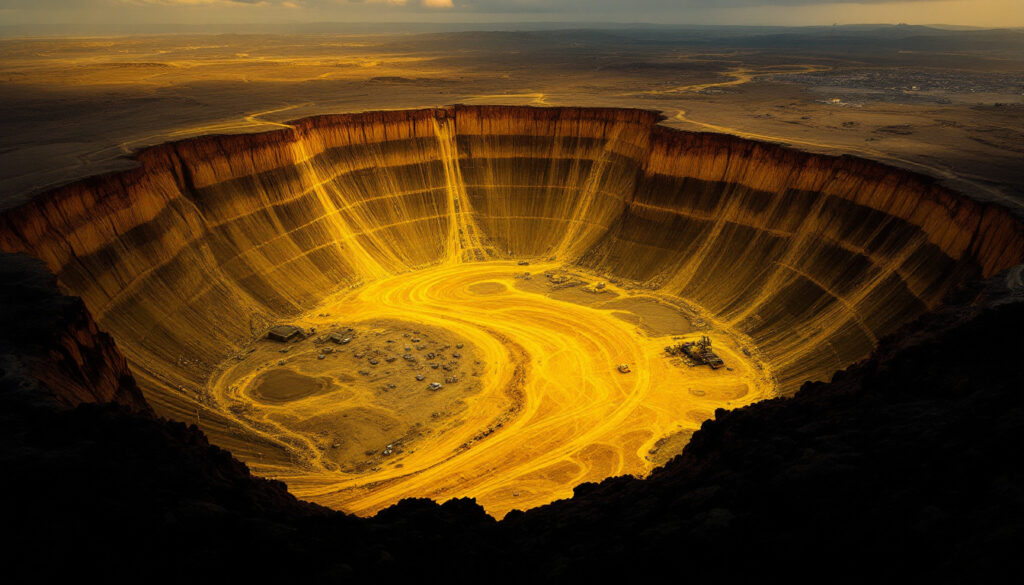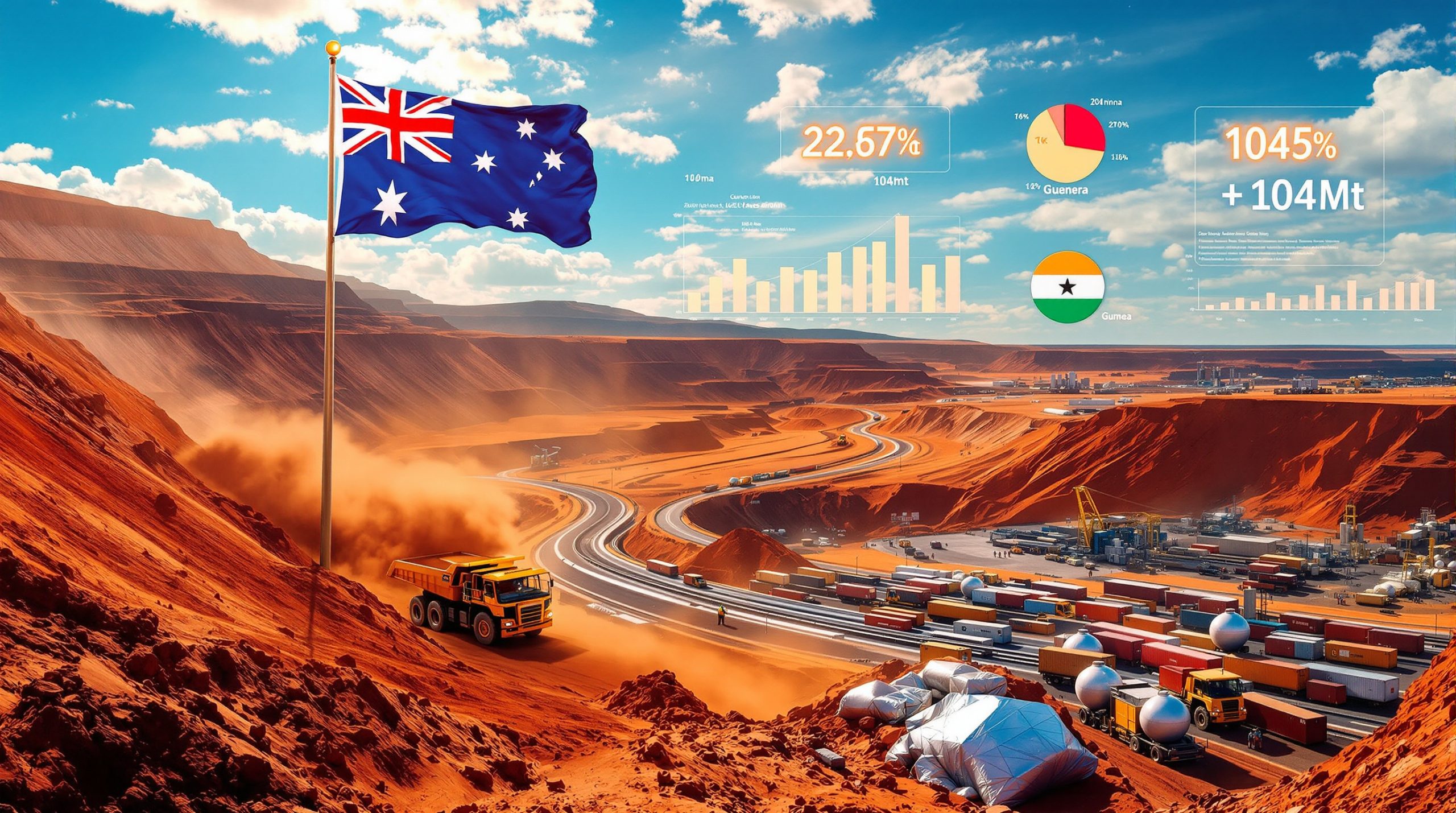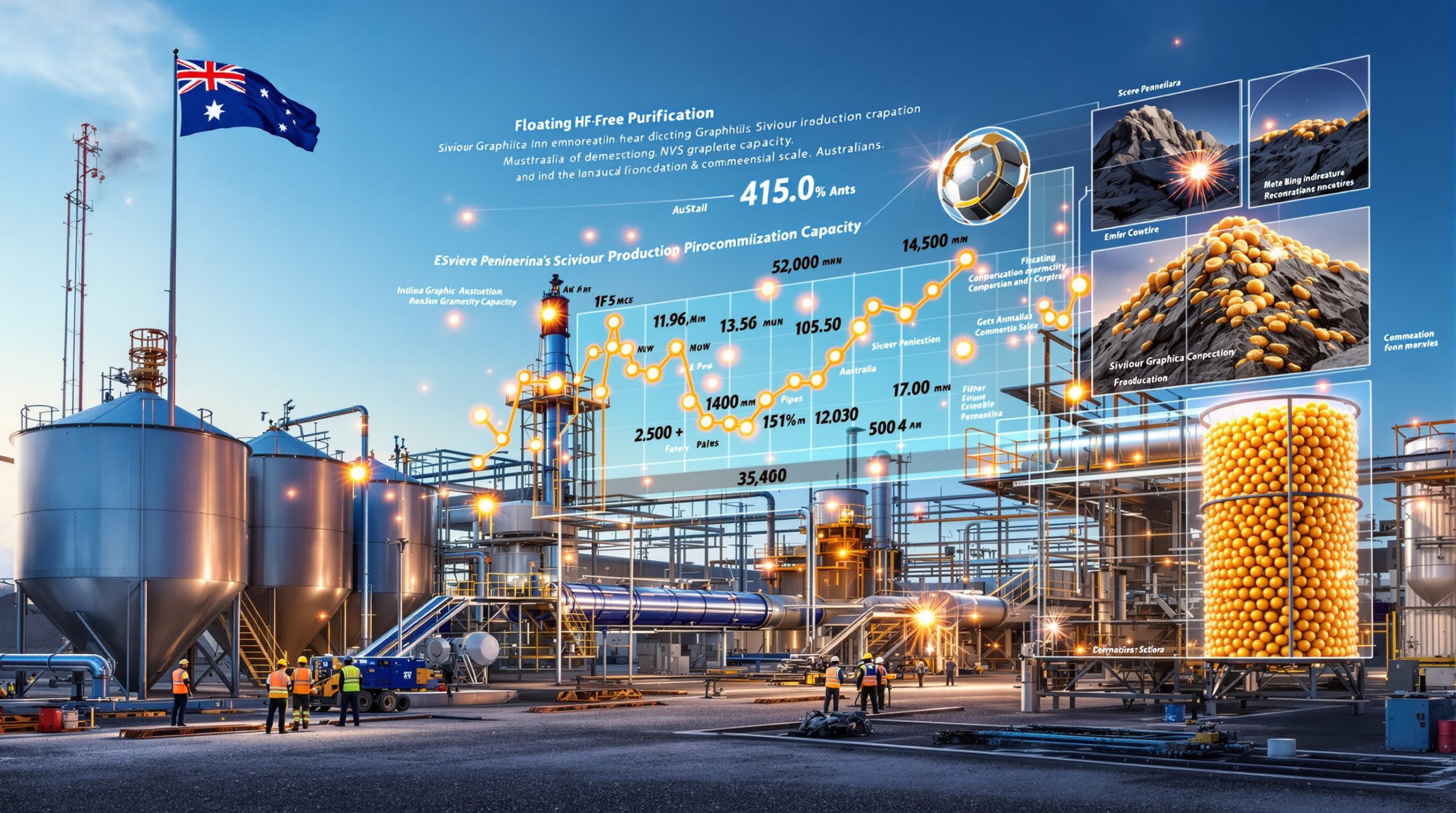Iran's Expanded Uranium Mining: Strategic Implications and Global Concerns
Iran's uranium mining activities have drawn significant attention from global powers and nuclear watchdogs in recent years. Since 2022, the Islamic Republic has launched operations at more than half a dozen new uranium mines, marking a substantial shift in its resource development strategy. According to the 2025 Red Book survey published on April 8, Iran has dramatically increased its uranium production and indicated significantly higher reserves than previously acknowledged.
This expansion is occurring despite international economic sanctions and amid fluctuating diplomatic tensions. With recent satellite imagery confirming new mining activities across multiple provinces, experts are reassessing Iran's nuclear capabilities and long-term strategic intentions.
"Iran's rapid mine expansion defies commercial logic, given its low ore grades," notes former UN inspector Robert Kelley, highlighting the unusual nature of these developments in comparison to global mining standards.
What Is Iran's Current Uranium Mining Status?
Recent Expansion of Mining Operations
As of 2025, Iran has increased its operational uranium mining sites to 14, up from just 7 in 2021, according to the International Atomic Energy Agency (IAEA). This 100% increase in active mining locations has enabled Iran to boost its yellowcake (U₃O₈) production by an estimated 150% since 2022, reaching approximately 400 metric tons annually.
The Saghand Mine in Yazd Province has emerged as a critical asset, now accounting for roughly 30% of Iran's total uranium production. According to geological surveys cited in the Red Book, Iran's mining activities now span multiple geological formations, from sedimentary deposits in central regions to volcanic-associated deposits in the northwest.
Nuclear engineer Ali Rezaei states that "ore sorting technologies have reduced waste by 15% since 2023," indicating significant technological improvements in Iran's extraction capabilities despite international isolation.
Updated Reserve Estimates
The 2025 Red Book survey reveals Iran has revised its uranium reserve estimates upward from 1,400 to approximately 4,200 metric tons. This places Iran 12th globally in terms of reserves—far behind Australia's 1.7 million tons but sufficient to fuel a modest nuclear program for decades.
What makes these revised figures particularly noteworthy is their timing. The disclosure coincides with heightened regional tensions and stalled nuclear negotiations, leading some analysts to question whether the announcement serves strategic rather than purely economic purposes.
The quality of these reserves remains problematic from a commercial perspective. Most of Iran's uranium deposits contain ore grades of approximately 0.1% U₃O₈, significantly below the global commercial average of 0.2-0.3% that makes mining economically viable in competitive markets.
Why Is Iran Expanding Its Uranium Mining?
Strategic Resource Development
Iran's official position maintains that uranium mining expansion supports its civilian nuclear energy program, which aims to generate 20,000 MW of nuclear power by 2040—a target that would require over 1,000 metric tons of uranium annually.
This ambitious energy plan provides a publicly defensible rationale for mining expansion. However, the self-sufficiency argument carries particular weight in Iran's case, given its experience with international sanctions targeting its nuclear supply chain.
"Subsidized mining allows Iran to bypass sanctions on imported nuclear materials," explains economist Fatima Al-Nasr. "Even at higher production costs, domestic uranium provides strategic independence from international suppliers who might withhold materials under political pressure."
The timeline of mining expansion notably correlates with key diplomatic setbacks in the Joint Comprehensive Plan of Action (JCPOA) negotiations between 2022-2025, suggesting a possible connection between international relations and strategic uranium investments.
Economic Considerations
Iran's uranium mining operations face significant economic challenges. The cost per kilogram of U₃O₈ production in Iran stands at approximately $130, compared to just $50 in Kazakhstan, according to World Nuclear Association data from 2024.
This economic inefficiency becomes particularly striking when considering that Iran's domestic production remains well below what is typically needed to fuel its stated nuclear power ambitions. The IR-40 heavy water reactor, for instance, requires about 30 tons of 3.67% enriched uranium annually—necessitating substantial raw uranium inputs.
The investment in high-cost, low-yield mining operations resembles South Africa's uranium by-product strategy during apartheid sanctions, where resource independence was prioritized over economic efficiency. This historical parallel raises questions about whether Iran's mining strategy is motivated primarily by energy economics or strategic security considerations.
How Does Iran's Uranium Mining Compare Globally?
International Production Context
Iran's contribution to global uranium production remains modest at approximately 0.5% of worldwide output, compared to Kazakhstan's dominant 40% market share. This places Iran outside the top ten producers globally, despite its expanding operations.
The disparity becomes even more pronounced when comparing production methodologies. While Kazakhstan achieves industry-leading efficiency through 100% in-situ leaching (ISL) techniques, Iran employs a mix of conventional mining and ISL methods, leading to higher costs and environmental impacts.
"Iran's deposits are marginal but strategically concentrated in geopolitically secure regions," notes geologist Dr. Emily Tran. "Unlike major producers dependent on specific geological formations, Iran has diversified its mining portfolio across multiple deposit types, sacrificing efficiency for security."
This approach contrasts sharply with commercial producers like Canada's Cameco, which focuses on fewer, higher-grade deposits with automation to maximize returns. A comprehensive global uranium production guide shows how dramatically Iran's approach differs from industry standards.
Resource Quality Assessment
The quality of Iran's uranium resources presents significant extraction challenges. With average ore grades of 0.1% U₃O₈, Iran's deposits contain roughly half to one-third the uranium concentration of commercially viable operations elsewhere.
For comparison, Namibia's Husab Mine operates profitably with grades as low as 0.06% U₃O₈, but achieves this through massive scale and state-of-the-art processing. Iran lacks similar economies of scale, with its largest operations approximately one-tenth the size of major commercial mines.
Processing losses further compound efficiency concerns. IAEA data from 2024 indicates that Iran loses approximately 30% of uranium during milling processes—significantly higher than the 15-20% losses in top-tier operations elsewhere.
What Are the Technical Aspects of Iran's Uranium Mining?
Mining Methodologies
Iran employs various extraction techniques across its expanding network of mines. Conventional open-pit and underground mining dominate in regions with higher-grade deposits, while newer ISL methods are being tested at selected sites with appropriate geological conditions.
Satellite imagery analysis from 2023-2024 identified infrastructure consistent with acid leaching at three new mining locations, suggesting a shift toward more advanced extraction technologies despite international restrictions on dual-use mining equipment.
The technical challenges of Iran's mining operations extend beyond extraction. Approximately 60% of mined uranium undergoes conversion to uranium hexafluoride (UF₆) for potential enrichment, requiring uranium purified to 99.98% U₃O₈—a technically demanding process given the impurities in Iran's low-grade ores.
Processing Capabilities
The Ardakan Yellowcake Plant has emerged as the centerpiece of Iran's uranium processing infrastructure, handling approximately 50% of the country's uranium. The facility employs sulfuric acid leaching for uranium extraction, achieving around 70% recovery efficiency—below the 90% typical for Canadian processing plants working with higher-grade ores.
Energy consumption metrics reveal additional inefficiencies. Iranian processing requires approximately 2.3 times more energy per kilogram of uranium produced compared to world-leading facilities, according to analysis from the World Nuclear Association.
Despite these challenges, Iran has made noteworthy technical improvements. The introduction of ore-sorting technologies has reduced waste by 15% since 2023, and modifications to chemical precipitation processes have improved yellowcake purity, according to technical papers published by Iranian nuclear authorities.
What Are the International Security Implications?
Nuclear Watchdog Monitoring
The IAEA faces mounting challenges in monitoring Iran's expanding uranium activities. Between 2023-2025, the agency reported a 12% increase in discrepancies at Iranian sites, complicating verification efforts under the remaining JCPOA framework.
Satellite monitoring technologies, particularly synthetic-aperture radar (SAR), have become crucial for detecting undeclared construction activities at potential mining sites. However, the dispersal of operations across more than a dozen locations has stretched monitoring resources thin.
The 2024 incident at Marivan illustrates these challenges. IAEA inspectors detected uranium particles allegedly linked to weaponization studies, but verification was complicated by limited access and the site's proximity to both civilian mining operations and military facilities.
Proliferation Concerns
Security experts debate whether Iran's growing uranium reserves indicate preparations for potential nuclear weapons capability. According to a 2024 Center for Strategic and International Studies (CSIS) assessment, Iran's current stockpile could reduce "breakout time" to approximately six months if diverted entirely to a weapons program.
The UN Security Council has highlighted that "Iran's reserve disclosures lack transparency, hindering non-proliferation assessments," raising concerns about verification gaps in the mining-to-enrichment pipeline.
North Korea's historical example demonstrates how seemingly civilian uranium mining can transform into weapons-grade material production when political calculations shift. The technical infrastructure being developed at Iran's mines could similarly serve dual purposes if political decisions changed. Recent IAEA reports on Iran's accelerated highly enriched uranium production have only heightened these concerns.
What Does This Mean for Global Nuclear Diplomacy?
Impact on International Agreements
Iran's expanded uranium mining has significant implications for international nuclear agreements. The JCPOA did not impose direct limits on mining activities, instead focusing on enrichment and stockpile restrictions. This regulatory gap has allowed Iran to build substantial uranium reserves while technically adhering to certain aspects of the agreement.
According to the Arms Control Association's 2025 assessment, Iran's accumulated uranium stockpile now exceeds JCPOA limits by approximately 15 times, fundamentally altering the calculus of future negotiations.
Moreover, the "sunset clauses" in the original JCPOA would have lifted restrictions on uranium mining after 2030, raising questions about whether current expansion simply accelerates a trajectory already anticipated in earlier diplomatic frameworks.
Diplomatic Challenges
The expansion of mining activities presents complex verification challenges for future diplomatic initiatives. As diplomat Hans Blix notes, "Mining expansion undermines trust in Iran's 'peaceful program' claims," complicating negotiation positions.
Recent diplomatic history demonstrates how resource developments influence negotiation positions. Following partial sanctions relief in 2023, Iran's uranium exports to China reportedly increased by 200%, illustrating how mining capacity can rapidly translate into strategic leverage when political circumstances shift.
The parallels to the 1994 Agreed Framework with North Korea are particularly concerning. In that case, mining activities continued during diplomatic engagement, ultimately contributing to North Korea's eventual nuclear weapons capability after diplomatic breakdown. The current uranium market dynamics make these patterns even more concerning.
FAQ About Iran's Uranium Mining
Is Iran's uranium mining economically viable?
Iran's uranium resources generally fall below commercial viability thresholds, with production costs approximately 2.6 times higher than world-leading producers. At $130 per kilogram versus global market prices of $50-70, mining operations require significant government subsidies to remain operational.
How much has Iran increased its uranium reserves?
According to the 2025 Red Book survey, Iran has revised its uranium reserve estimates from approximately 1,400 to 4,200 metric tons—a 300% increase. These figures remain subject to independent verification.
What is the Red Book and why is it significant?
The Red Book is a biennial survey of the uranium industry jointly published by the IAEA and the Nuclear Energy Agency (NEA). As the authoritative global reference on uranium resources and production, its data informs international policy decisions and commercial market assessments.
How does Iran's uranium mining relate to its nuclear program?
While Iran maintains its uranium mining supports civilian energy production, the expansion of operations despite economic inefficiencies raises questions about strategic intentions. The uranium mining analysis shows that the mining-to-enrichment pipeline provides essential domestic control over the nuclear fuel cycle, with potential implications for both energy independence and proliferation scenarios. Recent studies on Iran's lack of domestic uranium resources further complicate our understanding of their strategic motivations for nuclear potential unlocking.
Ready to Spot the Next Major Mineral Discovery?
Stay ahead of the market with Discovery Alert's proprietary Discovery IQ model, providing instant notifications on significant ASX mineral discoveries and transforming complex mining data into actionable investment opportunities. Explore why major mineral discoveries can lead to substantial returns by visiting Discovery Alert's dedicated discoveries page and begin your 30-day free trial today.




